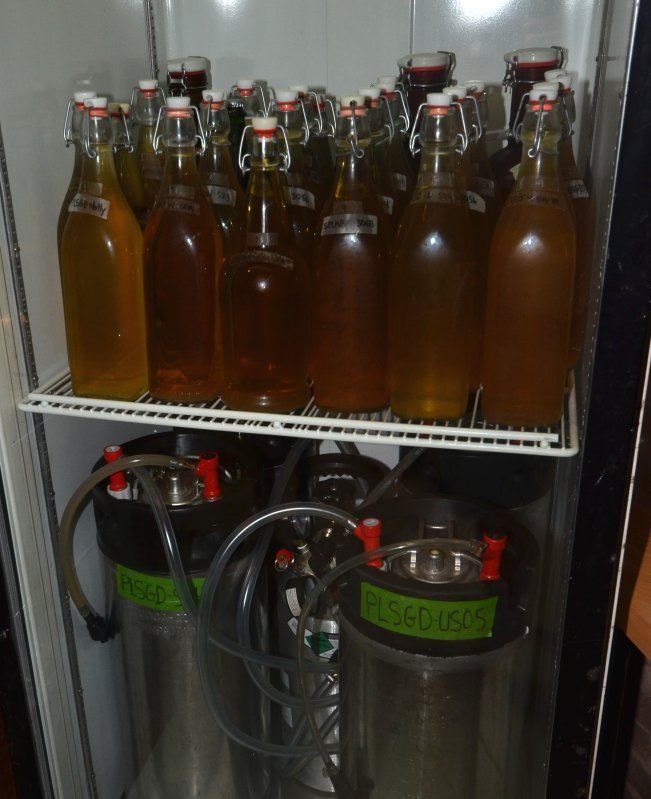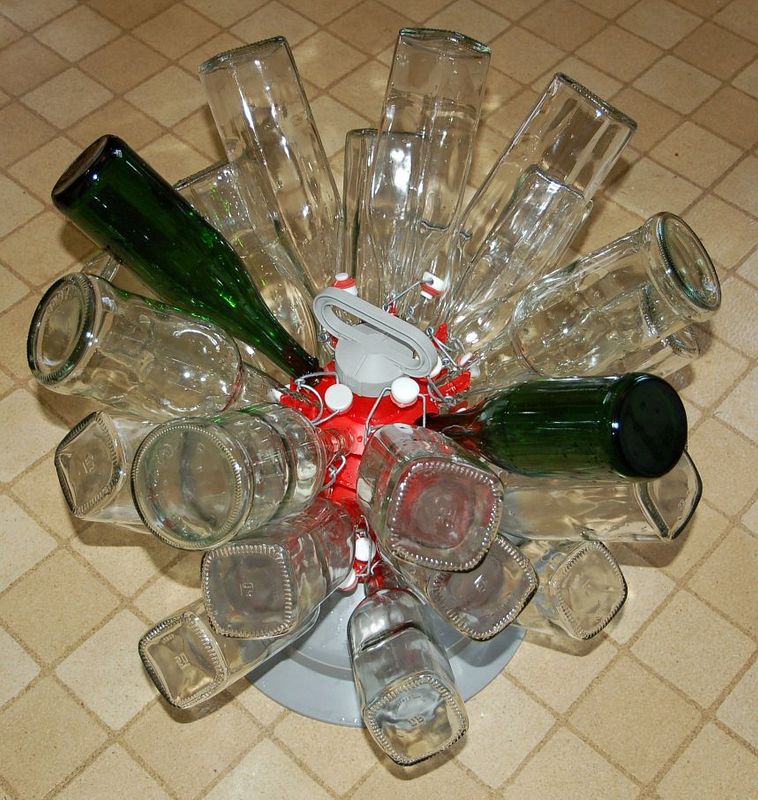This past Sunday, a bunch of friends came over to help me rate a bunch of ciders from last season and a few from previous seasons. We made it through 25 bottles, as well as making a dent in a couple kegs
Most everyone filled out rating sheets and 16 folks remained coherent enough to remember to give them back to me, including half dozen or so intrepid (and/or crazy) folks who managed to make it through all 25!
The top three scores were all from the same batch of juice - Stayman, Albemarle Pippen, Winesap, pressed 11/19/12. Not sure if that was a particularly great batch of juice or maybe because we had already put away a dozen bottles by then.
The winner of the evening, with an average score of 8.17 was #14, fermented with Bavarian Wheat yeast (Wy3056), no sulfites, and crashed at 1.012. It scored a bit higher than an identical batch, which was sulfited before pitching the yeast to kill the wild yeast. The sulfited batch scored 7.375. Personally, I liked the sulfited batch better. It didnt have as much character, but tasted cleaner to me - I was in the minority.
Close behind, with a score of 8.125 was #13, fermented with Brupaks Ale yeast, after sulfiting to kill the wild yeast and crashed at 1.008. The unsulfited version of this was really good as well, but unfortunately I didnt save a bottle from that batch for comparison
Third runner up, with a score of 7.71 was #16, fermented with WLP041 Pacific Ale yeast, no sulfites, crashed at 1.012.
In general, I'd say that the sulfited batches were not quite as good as their unsulfited counterparts. However, all three sulfited batches managed to survive almost a year and still score at least in the mid 7's. There were a few unsulfited batches that scored better (and IMHO were better), but also quite a few unsulfited batches from last year that didnt even make it to this tasting because they got acidic, probably from the residual wild yeast working. Once they get acidic, it can take another year for them to mellow out enough to be drinkable again. This season I'm planning on doing more sulfited batches to get some more side by side comparisons.
Interestingly, cider #3 (Cortland, Grimes Golden, Empire, Gala, Summer Rambo, Jonathan - pressed 9/13/12, fermented with Weihenstephan Wheat yeast , and crashed at 1.010) only scored a 6.1, despite having won gold at the Dominion cup a few weeks ago. I'd have to agree that it wasnt as good as a lot of the others and it wasnt as good as I remembered. It seemed to have become more acidic with age. It may have been the bottles - this was from the first batch of juice last year and the ones that I entered in the Dominion Cup had been stored in brown 12 oz bottles since last December, whereas the one we drank on Sunday was stored in a clear one liter bottle
Lots of others scored in the low to mid 7s, so overall a pretty good night....although not without a few duds. There was a batch from 2008, Stayman and Winesap apples, fermented with wild yeast and stopped at 1.000 with sulfite and sorbate, that got a whopping 2.67, which was probably more than it deserved. I only used half the recommended amount of sorbate, but 5 years later, you could still taste it. There were 3 other dry ciders and they all got average scores of under 5, although a few people liked them.




